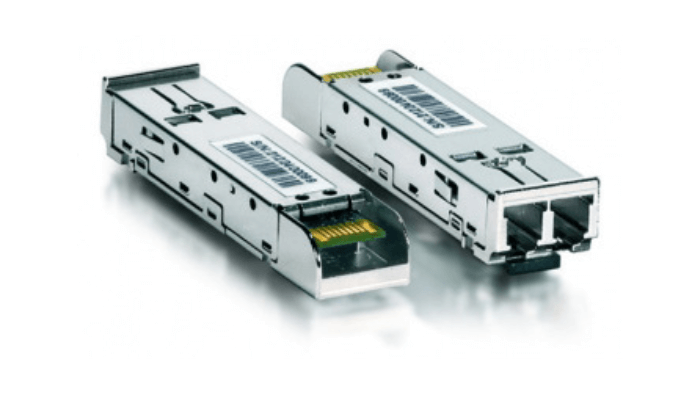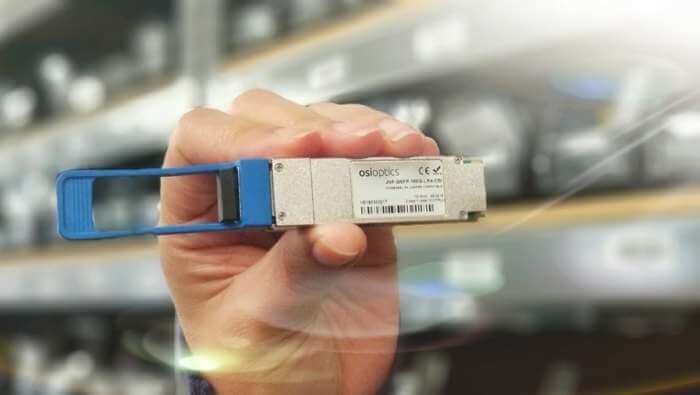Third-Party Optical Transceivers
As bandwidth demands continue to skyrocket, network operators must look for ways to scale network capacity without sacrificing network performance and reliability. One very significant opportunity for cost savings is the use of third party transceivers. Since network transceivers use as much as 15% of enterprises’ network capital spending, businesses are understandably looking for ways to save money on equipment. However, while this approach has been commonly used by service providers for many years, there is STILL a fair amount of misunderstanding and even fear about such an approach. If you’re a long-time OEM user, you may be hesitant to make the leap to a third-party model. OEMs have successfully convinced many businesses that third-party equipment is cheap and unreliable, but this is far from the truth. Here’s what to know about third-party alternatives and why you should consider purchasing third-party equipment instead of OEM optics.

What are Third-Party Transceivers?
What is important to understand about third party optical transceivers is that these products are coming off the same assembly lines as the OEM units and in most cases are the same exact hardware used by the OEM. If chosen properly, your third-party optics provider can offer a product that exceeds the physical spec and performance required by the OEM. Some commonly used Cisco transceivers that come from the same factories include GLC-TE, SFP-10G-SR, SFP-10G-LR, QSFP-40G-LR4-S, and QSFP-100G-LR4-S. Third party transceivers are “plug and play” and will operate exactly as their comparable OEM branded optics.
Myths About Third Party Transceivers
Unfortunately, there is a fair amount of FUD (fear, uncertainty and doubt) spread by some OEM’s about third party optics. The common myth spread is that using third party transceivers will void the OEM’s support contract. Not only is this false, but it would also be illegal. The Magnuson-Moss Act which came out in the 70’s rules against “tie-in” sales, ie requiring all OEM associated equipment as a condition of warranty. What IS accurate to say is that the OEM will stop a troubleshooting case once it is identified that the source of the trouble is the third party optic itself. Cisco even details this process on their website.

The other myth is that third party optics are technologically inferior to OEM transceivers. As a broad statement, this is also untrue. In fact, as mentioned earlier, in many cases the source of the raw parts is exactly the same source used by the OEM’s. Don’t make the mistake of assuming that just because OEM equipment is marked up that it’s made of higher quality materials than products sold by other sellers. There CAN be cases where some so-called low-cost providers are utilizing lower quality parts or even recycled components from failed optics, so some attention should be given during your evaluation to the quality and testing processes involved. A good proxy for assessing quality would be what sort of guarantee or warranty is provided by the company offering the third-party optic. OSI optical transceivers are not only manufactured from the same tier 1 suppliers as the OEM’s, but they are guaranteed for the life of the optic.
Other Considerations When Purchasing Third Party Optics
Coding
The other thing to understand when purchasing third party optics vs using the OEM’s is that many OEM platforms include software programming that require specific data fields in the optics to be populated with a specific alpha-numeric code. Without the proper coding, the optic may produce an error readout or, worse, fail to operate. Most quality third party optics providers have the ability to “code” the optics to work correctly. However, a good question to ask is whether the coding is done in-house or overseas, where the optics are sourced. This is important to understand as it impacts how quickly a provider can respond in a troubleshooting scenario where the coding is involved. Along those lines, it is important to understand two other key factors: 1) Is coding included in the provider’s guarantee..ie are the optics guaranteed to operate properly on the platform where they are being deployed and 2) how is a trouble or return handled to ensure quick resolution? Will the provider send an optic in advance of receiving the failed optic or does the failed optic have to be returned and shipped out before a replacement can be received? OSI Optics are all coded in house, and on-site engineering support is provided at no cost. If there is trouble with an OSI optic, an advance replacement is sent out at no additional cost to the customer. In addition, when requested, a coding box is provided to the customer at no cost in order to have the flexibility to change the platform-specific coding so the optic can be re-purposed, resulting in significant savings.
Long-Term Support
Unlike most OEMs, some third-party sellers typically provide long-term support for their products. Warranties are usually offered through OEMs for a certain time after purchase, but most third-party sellers offer extended or lifetime coverage options. This fact alone is enough to cause businesses to reconsider purchasing OEM transceivers, as they want to be sure they’ll be able to receive timely support, even after their warranty expires. OSI’s transceivers are not only custom coded to customers’ needs, but come with a lifetime warranty, making them a great option for businesses that require long-term support.
Conclusion
When it comes to the using third party transceivers vs OEM, the bottom line IS the bottom line. The savings can be quite substantial, and IF you use the right third party optics provider, that savings will come with the peace of mind that there will be no loss of operational performance and reliability.
If you’ve decided on exploring third party optics, get in touch with OSI, a Gartner recognized leader in optical solutions, to learn more about our optical transceivers and the benefits they can provide your organization. OSI optics are coded in-house and designed to match or exceed OEM specs and are a great alternative to OEM-produced equipment. OSI optical transceivers are significantly cheaper than OEM optics, are regularly in stock, and, in most cases, can be shipped overnight. OSI’s transceivers are compatible with all major OEMs and platforms and come in all form factors including 400G QSFP-DD, ZR and ZR+. Reach out today so that OSI can help you find the best transceiver for your business!




